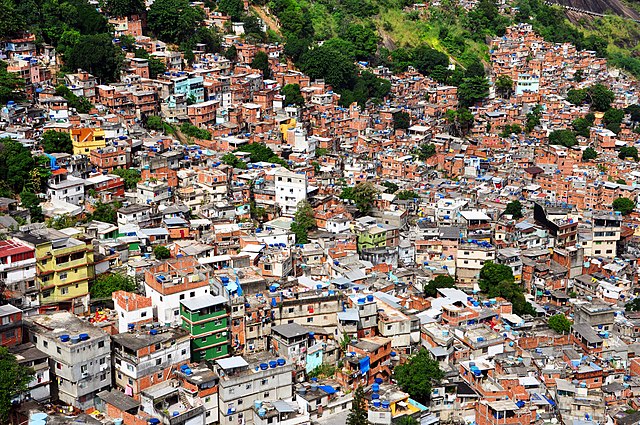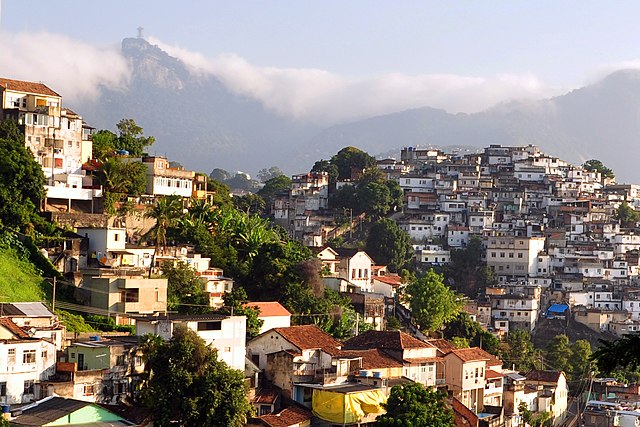பவேலா (favela, போர்ச்சுகீசிய உச்சரிப்பு : [faˈvɛlɐ], ஃபவேலா) பிரேசிலின் நகரியப் பகுதிகளில் உருவாகியுள்ள சேரி ஆகும். குப்பைகளாலும் கழிவுப் பொருட்களாலும் நிலவுரிமையற்ற இடங்களில் கூட்டமாக கட்டப்படும் வீடுகளுக்கு மின்சார இணைப்போ குடிநீர் இணைப்போ இல்லாது உள்ளது. 19ஆம் நூற்றாண்டின் இறுதியில் முதல் பவேலாக்கள் உருவாயின; படைவீரர்கள் வாழ இடம் கிடைக்காது இந்த பவேலாக்களை உருவாக்கினர். சில துவக்க கால பவேலாக்கள் பைரோசு ஆபிரிகானோசு (ஆபிரிக்க அக்கம்பக்கம்) எனப்பட்டன. நிலவுரிமையற்ற, வேலை வாய்ப்பற்ற முந்தைய நாள் அடிமைகள் இங்கு வாழ்ந்தனர்.




முதல் பவேலா உருவாவதற்கு முன்பே ஏழை குடிமக்கள் நகரத்தில் வாழ ஆனுமதிக்கப்படாமல் புறநகர் பகுதிகளில் வாழ்ந்து வந்தனர். இருப்பினும் தற்கால பவேலாக்கள் 1970களில் உருவாகத் தொடங்கின; சிற்றூர்களிலிருந்து வெளியேறி பெருநகரங்களுக்கு குடிபெயர்ந்த மக்களால் இவை ஏற்பட்டன. வாழும் இடம் கிடைக்காத பலரும் பவேலாக்களில் குடியேறத் தொடங்கினர்.[1] திசம்பர் 2011இல் வெளியான கணக்கெடுப்பு தரவுகளின்படி ஏறத்தாழ 6 விழுக்காடு பிரேசிலியர்கள் பவேலாக்களில் வசிக்கின்றனர்.[2]
மேற்சான்றுகள்
Wikiwand in your browser!
Seamless Wikipedia browsing. On steroids.
Every time you click a link to Wikipedia, Wiktionary or Wikiquote in your browser's search results, it will show the modern Wikiwand interface.
Wikiwand extension is a five stars, simple, with minimum permission required to keep your browsing private, safe and transparent.
